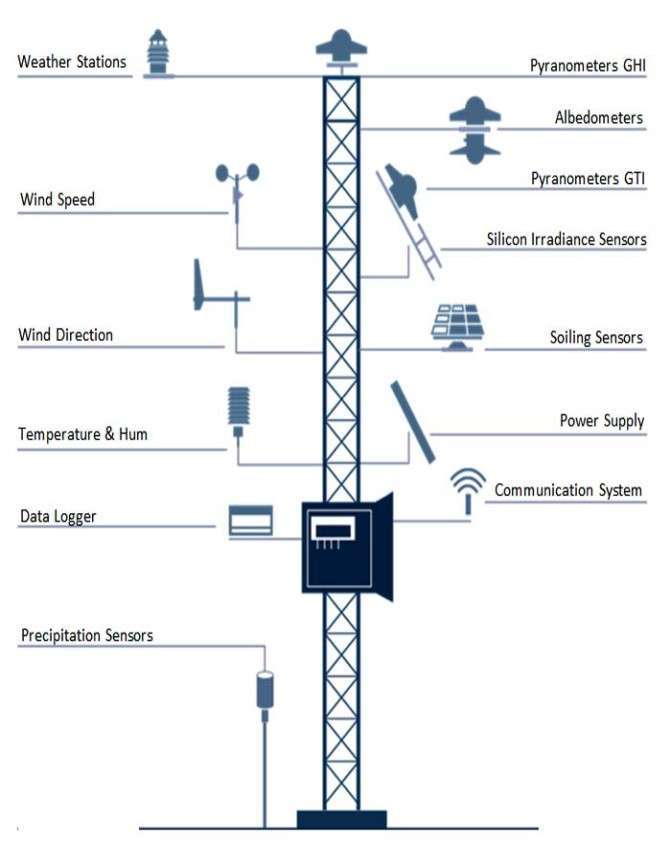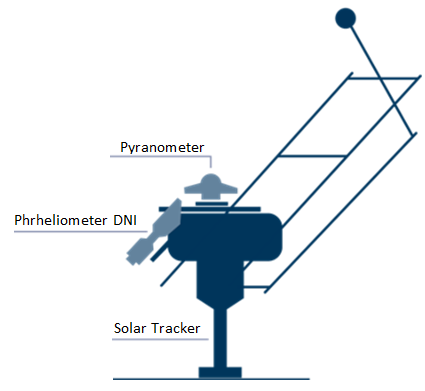
Solar energy is becoming an increasingly important source of clean and renewable energy worldwide. To maximize the potential of solar energy, it is important to understand the local solar resource and monitor the performance of solar energy systems in real-time. This is where solar radiation monitoring system is required in PV Plant. It plays vital role for Solar Resource Assessment and Solar PV Plant Performance Evaluation.
Solar Resource Assessment, or SRA, is an important step in the process of measuring and analyzing the amount of solar energy that can be generated at a specific location. It involves determining the solar irradiance (amount of sunlight reaching the ground) along with evaluating weather data such as potential shading and other factors that could impact solar energy production. The data collected is crucial for optimizing the design and performance of solar energy systems. If you are interested in determining the solar energy potential of your location through solar resource assessment, please feel free to reach out to us.
Solar Photovoltaic (PV) Plant Performance Evaluation is a crucial process that helps in determining the efficiency and effectiveness of a solar power plant. It involves collecting data on performance parameters such as energy output, system availability, and energy losses. The collected data is then analyzed to identify any deviations from the expected performance and to determine the cause of any issues.
This evaluation helps to identify areas for improvement and optimize the performance of the plant and Solar power monitoring so that it can operate at its full potential. This could include maintenance, repairs, and upgrades to the system components and the power management system. The evaluation is an ongoing process that ensures the plant operates efficiently and delivers maximum energy output, providing reliable and sustainable energy to meet the needs of the community.
In order to carry out this evaluation, a Weather Monitoring System (WMS) is used to collect data. The WMS helps in keeping a close eye on the weather conditions and how it affects the performance of the solar PV plant. This helps in making necessary changes to the system to ensure that it is functioning at its best.
Additionally, the performance evaluation of a solar PV plant helps in assessing the return on investment (ROI) for the plant’s owners and investors. It provides crucial insights into the plant’s financial viability and helps in identifying opportunities for cost reduction and increased revenue generation.

Weather stations are an essential part of solar monitoring systems as they provide real-time information about the weather conditions at a particular location. This data is critical in optimizing the performance of solar panels and ensuring they operate at maximum efficiency. Weather stations monitor various weather variables including temperature, wind speed, wind direction, precipitation, and more, all of which can impact solar energy production.
The key components used in weather monitoring systems for solar PV plants include a pyranometer (to measure solar radiation), an albedometer (to measure incoming and reflected global solar radiation), a pyrheliometer (to measure direct solar radiation), sun trackers, a PV reference cell, a cloud cover sensor, a rain gauge, an anemometer, and a barometric pressure sensor. These components work together to provide accurate and up-to-date weather data to ensure solar energy systems’ efficient and effective functioning.
The main components for weather monitoring systems used in solar PV Plants are given below.
An albedometer uses 2 pyranometers to measure incoming & reflected global solar radiation to determine solar albedo. Bifacial solar modules add value by contributing to reflected radiation measurement, increasing the accuracy of albedo determination.
PV reference cells measure irradiance by converting photons into charges to generate a current. They work differently from other methods and provide results depending on the spectral distribution of photons.
Solar Pathfinder is a portable tool used to assess the potential of a site for solar energy production by analyzing the shading patterns and solar access.
A rain gauge is used to measure precipitation at a solar PV plant to ensure the proper functioning of the solar panels and equipment.
Anemometer measures wind speed and direction. It is commonly used in weather stations and in wind energy assessment. The device uses cup, vane or sonic sensors to determine wind speed and direction.
A Barometric Pressure Sensor measures air pressure in the atmosphere to determine changes in atmospheric pressure and weather patterns.
An ambient temperature sensor in a solar PV plant measures the external temperature around the solar panels and provides real-time data to the system. This information is used to optimize energy production and maintain the plant’s overall performance, as temperature changes can impact the solar cells’ efficiency.
A module temperature sensor measures solar panel temperature, provides real-time data, and optimizes energy production, preventing overheating and ensuring performance and longevity.
A soiling loss sensor measures solar panel dirt/dust, provides real-time data for optimized energy production, and minimizes soiling loss for a solar PV plant.

A pyranometer is a device used to measure solar radiation incident on a surface, including GHI (Global horizontal radiation), DHI (Diffused Horizontal Irradiance), GII/GTI (Global Tilted Irradiance)/POA(Plane of array)
Sun tracker adjusts angle of PV panels and telescopes to optimize sun exposure, resulting in higher energy absorption and conversion to electricity.
Pyrheliometers measure direct solar radiation (DNI) & must always point at sun. Used with sun trackers like STR-21G for accurate yearly sun location tracking.
A cloud cover sensor in solar PV plants measures cloud presence, provides real-time data, and optimizes energy output.